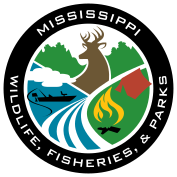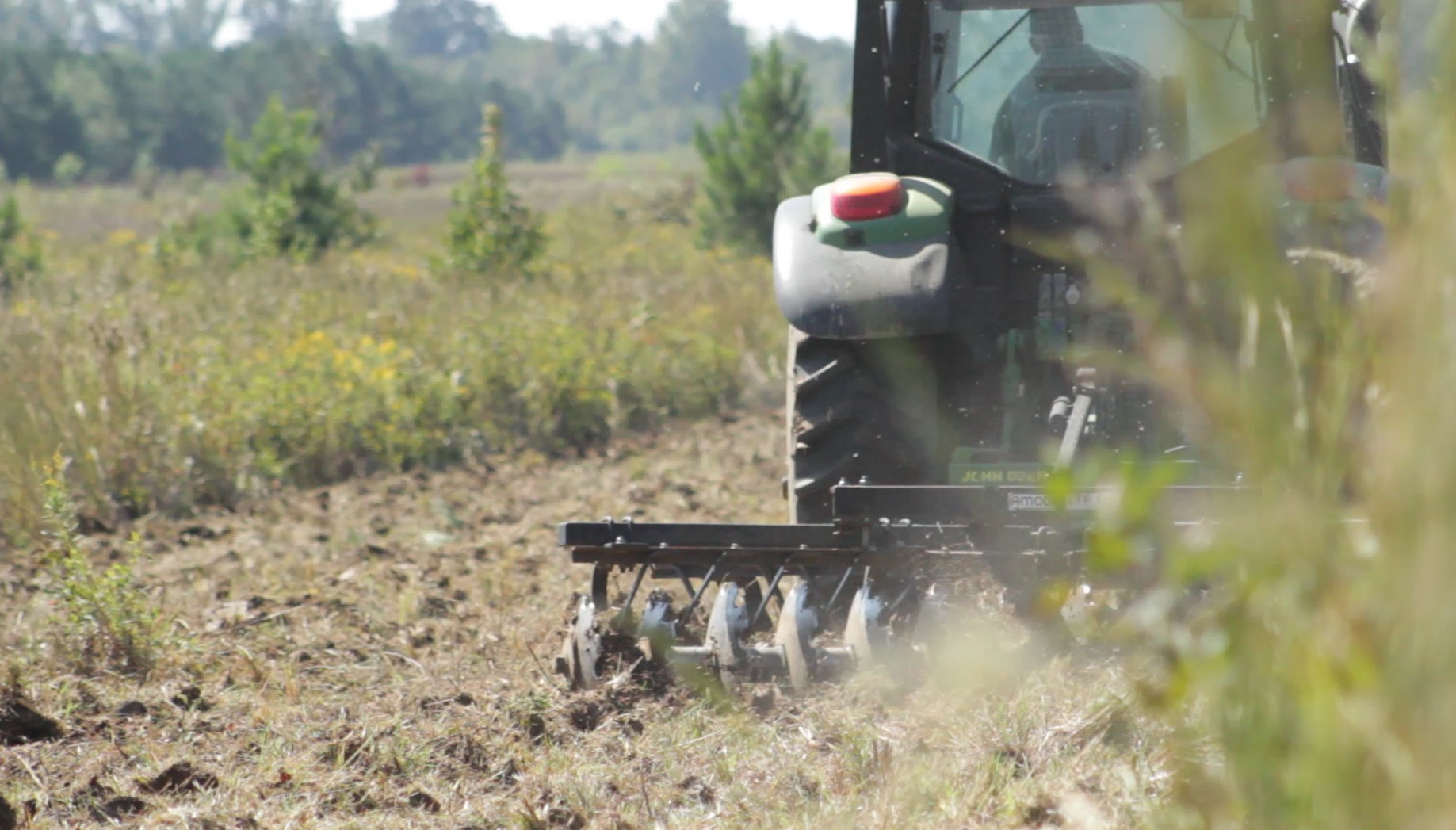
Written by: Chandler Strickland
Edits by: Pierce Young

When it comes to habitat management, many landowners immediately think of planting food plots or conducting prescribed burns. But there’s another highly effective—and often overlooked—practice that can dramatically improve wildlife habitat while keeping costs low: disking.
Like prescribed fire, disking is a tool used to “reset” plant succession, encouraging a flush of new growth and increasing plant diversity. By disrupting the soil surface, disking stimulates the germination of a wide variety of seeds lying dormant in the soil’s seed bank. This renewed plant growth benefits many game and non-game species by producing an abundance of natural forage and cover.
Choosing the Right Location
For the best results, select openings that are already free of large stumps and debris. Old fields, or utility rights-of-way can be excellent candidates—if non-native, invasive grasses such as bermudagrass or bahiagrass have been controlled beforehand with herbicide. Removing these aggressive species ensures native plants have space to establish and thrive after disking.
Depth and Timing Matter
Unlike preparing a seedbed for a food plot, wildlife disking doesn’t require deep tillage. A shallow pass—just a few inches deep—is enough to expose soil and stimulate seed germination. Timing is also important.
- Fall Disking (September–November): Encourages a flush of forbs (broadleaf plants), which provide high-quality forage for deer, turkey, and other wildlife. Forbs also attract a variety of insects, which are an essential food source for turkey poults and quail chicks. This is often the preferred time for wildlife management.
- Spring Disking: Tends to favor grasses and woody sprouts, and can provide structure for nesting and escape cover. This can be useful in certain habitat types but should be applied strategically to avoid excessive grass dominance.
Strip and Patch Disking for Diversity
To maximize habitat benefits, consider strip disking or patch disking. These techniques involve disturbing soil in alternating sections—either in strips across a field or in scattered patches—while leaving adjacent areas undisturbed. Larger patches with more interior space is preferred. Over time, you can rotate which sections are disked, creating a mosaic of plant communities in different stages of growth. This structural and plant diversity supports a wider range of wildlife species throughout the year.
A Simple, Cost-Effective Habitat Tool
When done strategically, disking can be one of the most cost-effective ways to boost plant diversity, increase food availability, and improve nesting and brood-rearing cover. Whether used alone or in combination with prescribed fire and targeted herbicide treatments, it can play a valuable role in your habitat management plan.
For more information on how to incorporate disking into your property’s wildlife management strategy, visit our website at
www.mdwfp.com/wildlife-management-info
To meet with a biologist to discuss wildlife management on your property visit